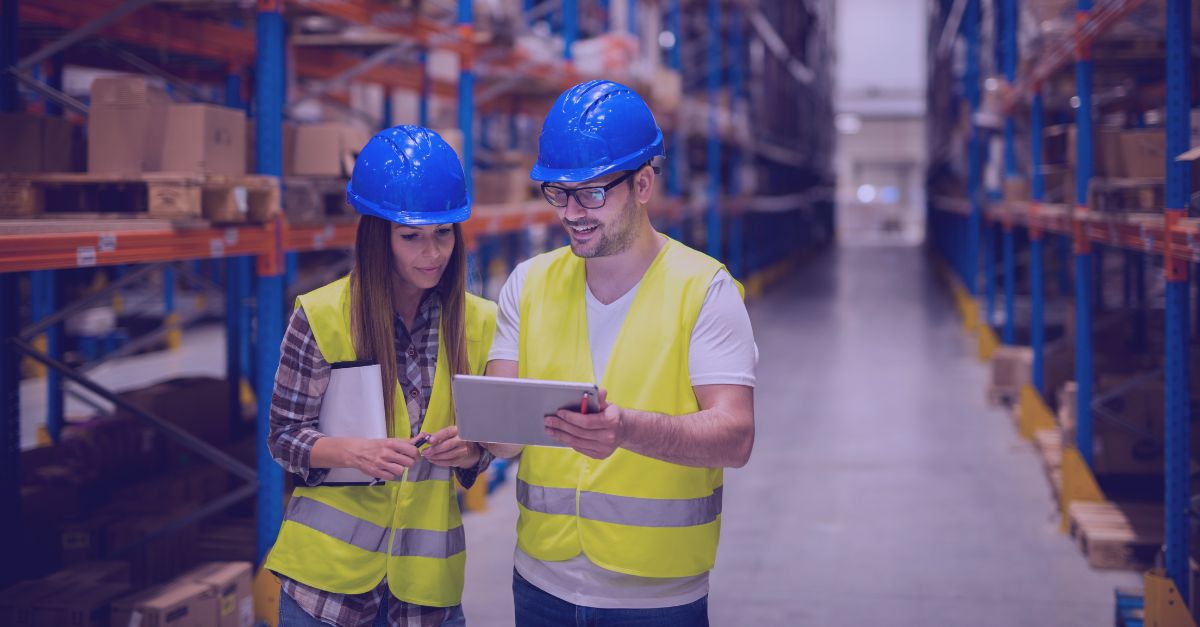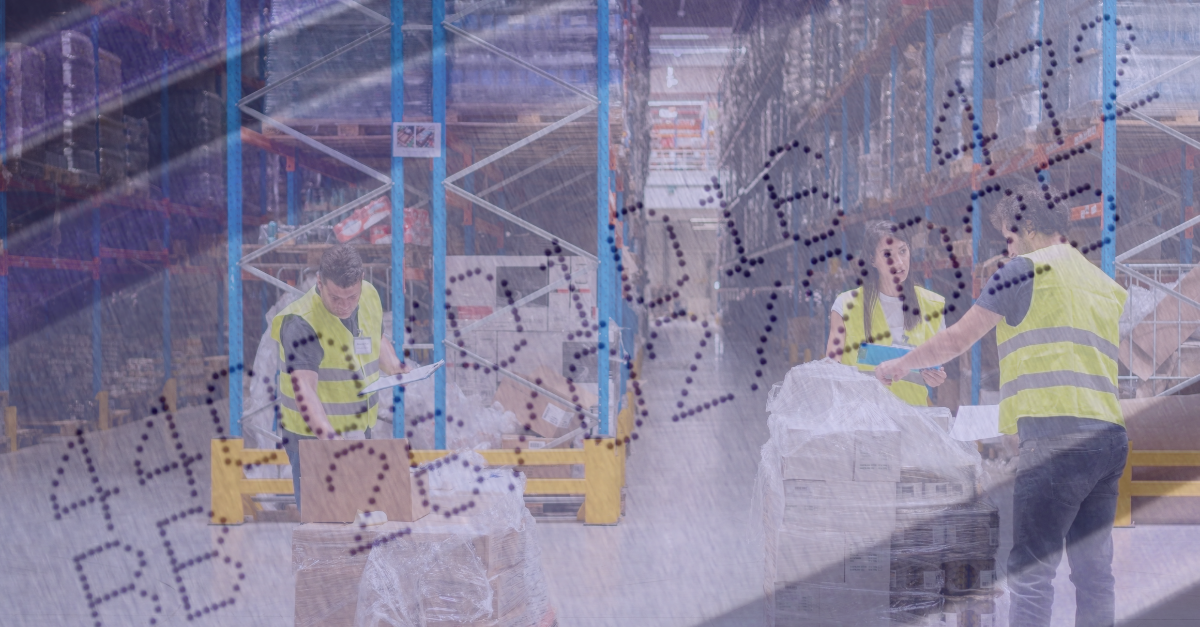It is no secret that our planet is in great difficulty: major climate crisis, diverse and abundant pollution, reduction in biodiversity, etc. The footprint of human activities is preponderant.
The field of logistics and transport is particularly concerned, bearing a significant responsibility for this global phenomenon, in particular in terms of CO2 emissions. Each year, more than 100 billion packages are sent around the world! So, global freight transport, which is constantly increasing, accounts for more than 10% of total pollutant emissions. Even worse, one in three road transport runs empty, contributing significantly to the global carbon footprint... for nothing! It is now time to adopt behaviors and processes that are much more environmentally friendly. Good news, getting there has never been easier. Discover our advice for a much more sustainable logistics.
1 Switch to responsible purchasing and the sustainable management of goods and products.
The first step towards sustainable logistics is to review your purchasing policy. By opting for more environmentally friendly materials, suppliers and services, a company can significantly reduce its carbon footprint. Responsible purchasing consists of favor local suppliers, who limit emissions related to transport, and to choose materials that are recycled or have a low environmental impact.
A responsible purchasing strategy is also based onintegration of environmental criteria in the supplier selection process. For example, environmental certification (such as ISO 14001) can become a primary criterion in your tenders. By opting for quality materials that have a long lifespan, and/or are produced from recycled materials, you are helping to reduce CO2 emissions (production) as well as waste and costly waste management. Moreover, whenever possible, local procurement promotes not only the reduction of logistics costs, but also sustainable mobility.
2 Less packaging, more recyclable materials
No logistics without packaging: protecting the products transported, being able to easily identify them with labels is part of the job. But packaging is also a source of a lot of waste. Rethinking your packaging strategy by choosing recyclable or biodegradable materials contributes to zero waste logistics. Businesses can opt for dEnvironmentally-friendly packaging which not only reduce the use of plastic, but also allow for the environmentally responsible management of returns. The reduction of single-use plastics is therefore a priority for all companies wishing to adopt an ecological transition approach.
Likewise, there is no need to ship products in oversized packages, the void of which is filled with cardboard or plastic materials. This is why packaging must be exactly adapted to the products shipped, with the aim of optimizing the product volume/packaging size ratio. Moreover, beyond the simple mess, Too bulky packaging unnecessarily increases the volume of warehouse storage, as well as the number of trips : more trucks are needed to transport the same quantity of products depending on whether they benefit from eco-designed and adapted packaging or not. Reducing the size of packages effectively contributes to the reduction of CO2 emissions.
3 Selective sorting as a mantra
No sustainable logistics without waste sorting or optimized recycling. Promote rigorous selective sorting reduces the company's overall carbon footprint and to promote more efficient management of resources. This starts at the warehouse, with the establishment of efficient systems for sorting, reusing packaging and recycling.
Through effective waste management, businesses can ensure that the resources used are reintroduced into the production cycle in the form of recycled materials. This circular approach is part of a logic of corporate social responsibility (CSR) and makes it possible to improve green logistics.
In order to adopt such a policy, you need to know the status of your stocks and stored products. So you can work with a logistics company that gives you permanent access to information about your stock. Check essential items regularly, such as:
- La storage time of each of your products: the longer it is, the more likely it is that they could have deteriorated,
- Les stored products : are some not obsolete, now unusable, such as outdated communication or marketing tools, produced especially for past events, etc.?
- Les circumstances and places of use of certain products: for example furniture used for events can deteriorate quickly,
- LThe condition of some products, especially the furniture...
On request, Stockoss can assess the good condition of conservation of your furniture or products. Likewise, like some other logisticians, we help you sort and can drop off your useless products in a garbage dump, a recycling center or a solidarity association.
4 Warehouses revisited through the prism of responsibility
Stockoss, your logistics facilitator, has a vast warehouse network already adapted to the requirements of sustainable logistics. If you have storage facilities, and they are beginning to wear out over time, do not start building new hangars blindly.
Start with ask yourself about the need to own warehouses yourself. What are the benefits for your business? Isn't it better to switch to the practice of shared warehouses? The benefits are multiple:
- You can havewarehouses ideally located according to your activity, and increase the number of storage points throughout the country: this optimizes transport by limiting the mileage and the time spent on trips;
- You are certain of consume only as much storage space as needed, without taking up unnecessary warehouse space.
If you need to keep warehouses clean, avoid building new ones. It is now possible to revitalize an aging warehouse, by modifying electrical components as well as the general layout. Economical warehouse management is based on materials and equipment that consume less energy (LED, presence detection with automatic switching off of lamps, etc.), improvements in thermal insulation, the choice of so-called “green” energy suppliers, etc.
5 Economical and low-polluting transport, the secret of sustainable logistics
As we have seen, CO2 emissions generated by road transport are a major source of pollution. It is therefore imperative to design a transport strategy that can be in line with an ambitious objective of reducing CO2. Sustainable logistics is first and foremost a way to optimize travel in every sense of the word:
- Calculate routes that allow full loads which will be distributed progressively along the path of the vehicle,
- Avoid empty returns as much as possible,
- Practice eco-driving : helping drivers to better manage their vehicle, to drive at a constant speed, to avoid unnecessary braking and acceleration, etc. There are telematic systems that can identify driving errors and allow drivers to be better trained, for example.
But, of course, limiting polluting emissions involvesuse of low-impact vehicles: hybrid or fully electric fleets are a big step forward, and many companies are in the process of equipping them. The Mobility Orientation Act (LOM) enacted at the end of 2019 encourages this evolution.
It is also wearing aSpecial attention to the “last kilometers”. The multiplication of home deliveries has led to increased demand for transport, especially in cities, and to high emissions of pollutants. The use of soft, impact-free mobility is becoming more and more frequent. Stockoss works with companies from fully carbon-free urban transport, making possible a greener and more sustainable urban logistics.
6 Digital technology as a cornerstone of logistics activity
La logistics digitalization is one of the most effective ways to optimize supply chain efficiency while limiting the ecological impact. By automating processes, you can reduce errors, improve inventory management, and contribute to better visibility of logistics flows. Sustainable logistics solutions include the use of green technology to ensure eco-responsible stock management.
In addition, digitalization makes it possible tooptimize delivery routes in real time. This reduces unnecessary trips and associated emissions, while optimizing resources and ensuring energy savings. The objective is to use digital tools to make logistics more fluid and reduce its environmental footprint.
With tools like the Stockoss OMS software, it is possible to track and manage stocks centrally. Thus, no more management errors and maximum optimization of resources.
7 Choosing the right suppliers for sustainable logistics
The choice of suppliers is another important factor in reducing the environmental impact of logistics. By collaborating with suppliers who adopt an eco-responsible approach, you can strengthen an entire responsible supply chain.
Stockoss is there to help you comply with environmental standards and support you at all stages of your supply chain, making it more sustainable and responsible. Our tailor-made solutions adapt to all problems, in a constant effort to combine maximum efficiency, profitability and sustainability. We make life easier for our customers by allowing them to outsource their logistics management while helping them to respect sustainable values.
The rapid expansion of Arkose climbing gyms posed a problem for the company: numerous sites across France as well as the management of second-hand furniture, a commitment by the brand to limit its carbon footprint represented a complex logistical challenge. Challenge met with our flexible solutions for optimized storage spaces and our personalized service: the conformity of the condition of each piece of used furniture with Arkose's specifications was verified by us.
Another example, the strategy of the Figaret brand, specialist in high-end shirts, is based in part on the multiplication of pop ups. Recourse to modular furniture requiring frequent assembly, dismantling, transport and storage, the growth of its business made this logistics more and more expensive and complicated. Our intervention with flexible and decentralized storage solutions, and our expertise in furniture installation operations have contributed to freeing the brand from these constraints and to being able to continue its development.
While continuing to ship goods to all places in France and the world remains an imperative and unchangeable reality, drastically reducing the ecological footprint of logistics has become an opportunity offered to all businesses. Stockoss, with its innovative digital tools, its network of transporters and responsible warehouses accompanies you in this transition towards logistics that is both carbon-free and optimized. We support you at every stage of your supply and delivery chain.

With rapid expansion and numerous popups, Figaret aimed at sustainable logistics for its Visual Merchandising. The aim was to effectively manage the removable and reusable furniture, despite the challenges of delivery to various addresses, including department stores.





